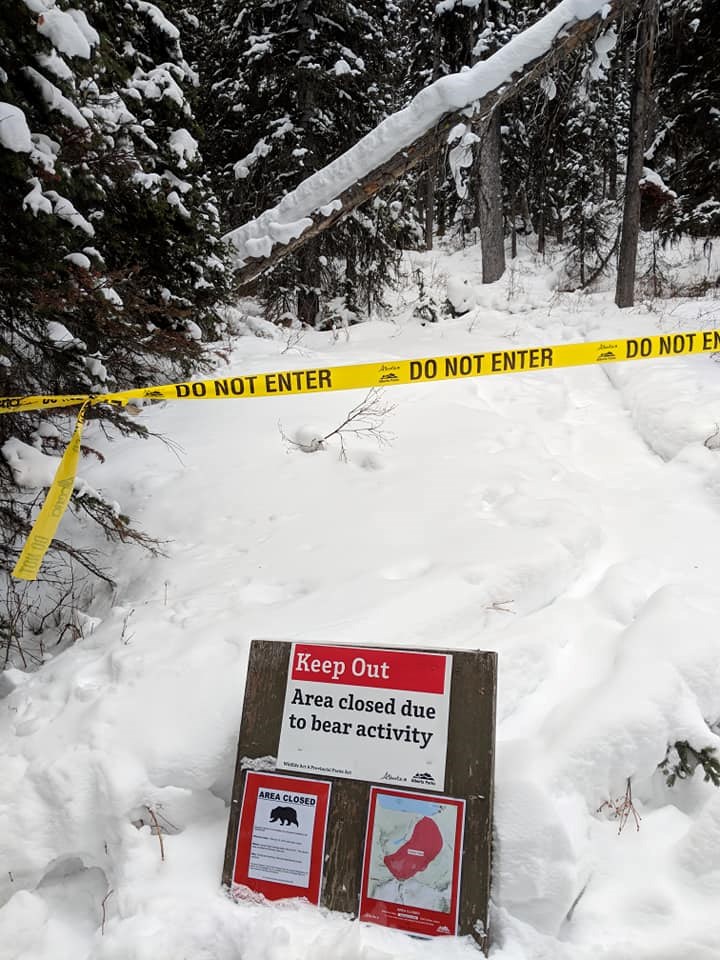KANANASKIS – A close encounter between a denning grizzly and a group of backcountry skiers prompted the closure of an area of Kananaskis Country to prevent more people disturbing the bear.
On Feb. 18, a group of skiers reported the close encounter with a large grizzly bear in the Sarrail Creek drainage below Mount Foch in Peter Lougheed Provincial Park.
“The bear came out of the den when the skiers passed and the bear was within one metre of the closest person,” said Arian Spiteri, a Kananaskis district conservation officer with Alberta Parks, noting the skiers were completely unaware the den was there.
“The bear ran away and the group tried to travel in a way to avoid the bear and give it space. They did come across tracks elsewhere later, but there was no further encounter.”
In winter, grizzly bears spend several months in their dens in an energy-saving state of hibernation, which scientists suggest implies that any disturbance to bears has the potential to have a large energetic cost on the animal. Research also suggests that there have been occasions when bears have abandoned their dens due to human activity.
“Because their body temperatures drop only a little in winter, they are able to react quickly and are easier to rouse than other hibernating animals,” said Spiteri. “In this case, we’re speculating the skiers disturbed the bear in its den.”
Typically some of the larger male grizzlies in Kananaskis Country and neighbouring Banff National Park will start heading out of the dens about mid-March.
Last year, the first sighting of Banff’s dominant male grizzly No. 122, also known as the Boss, was on March 24. In 2006, he was out as early as March 5.
The bear in K-Country was described by skiers as a large grizzly, and based on the time of year, it is most likely a male bear. It did not have a collar, or ear tag.
If the grizzly doesn’t go back to its den, Spiteri said it may likely find another bed in a sheltered area.
“It’s even more likely to be disturbed if it doesn’t go back into the den,” she said. “We’ve closed off this area to do whatever we can to give this bear space and to avoid any further encounters.”
In November 2015, a famed Scottish climber had a lucky escape after being attacked by a grizzly bear defending its den high on the slopes of Mount Wilson in Banff National Park.
Greg Boswell, considered one of the most talented climbers of his generation, was climbing with Britain’s Nick Bullock when the bear attacked him directly above steep cliffs about 2,200 metres up on the 3,261-metre mountain.
Spiteri reminded people that bear encounters in winter are extremely rare.
“Our grizzly bear collar data shows we’ve never had a bear emerge and go for a walk in winter,” she said, but added that is a small sample of the population.
In Kananaskis, please report all bear sightings to 403-591-7755. In Banff National
Park, the number to call is 403-762-1470.




